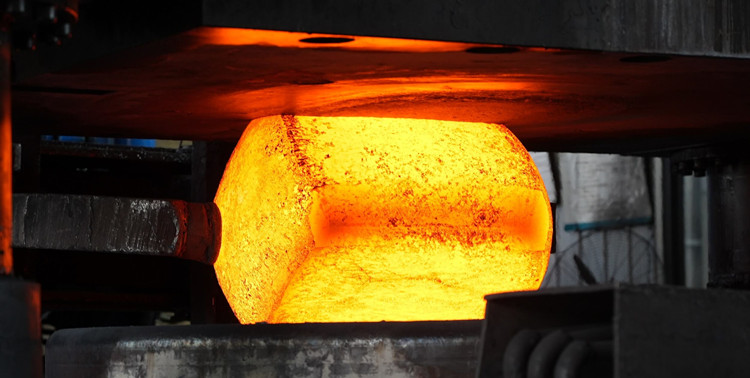- tyler@kirail.com
- +86 15603721115
Analysis of the crack induction mechanism is conducive to understanding the essential causes of cracks and is an objective basis for crack identification. Through a large number of forging crack case analyses and repeated tests, it can be seen that the mechanism and characteristics of alloy steel forgings are asymmetric, which is the key hazard of crack generation.

1. Raw materials with symmetrical mechanisms and characteristics.
During the entire deformation process, dislocations move along the sliding surface. When encountering obstacles, they will accumulate and generate sufficient ground stress to cause cracks, or cavitation and microcracks will occur due to the interaction of dislocations, and there is a tendency to develop into macro cracks. This is mainly due to the low deformation temperature (lower than the work hardening temperature), or excessive deformation degree and too fast deformation speed. This type of crack is often a transgranular crack or a mixed transgranular and intergranular crack, but because the molecules have a higher external diffusion rate at high temperature, it is conducive to dislocation climbing, accelerating forging repair and work hardening, making the microcracks already caused during the deformation process easy to repair, and will not develop into macro cracks when the deformation temperature is appropriate and the deformation speed is relatively slow.
2. The mechanism and characteristics of raw materials are not uniform.
For materials with asymmetric mechanisms and properties, cracks generally occur on grain boundaries and some phase pages. This is because forging deformation is generally carried out near the equal strength temperature of metal materials. The grain boundary deformation is large, so the grain boundary of metal materials is an unfavorable area for the metallurgical industry, and the second phase and non-metallic materials are concentrated in this area. At high temperatures, some low-solubility point chemicals on the grain boundaries of raw materials melt, strictly reducing the plastic deformation of raw materials; at high temperatures, some elements (sulfur, copper, etc.) in the surrounding materials diffuse along the grain boundaries to the inside and outside of the metal materials, causing the abnormal appearance of the second phase and the weakening of the grain boundaries; on the other hand, due to the difference in the physical and chemical properties between the two phases, the combination of traditional metal materials and certain phases is poor.
The raw materials commonly used for forging are generally asymmetric, so cracks are generated and developed along the grain boundaries or phase boundaries during the high-temperature forging deformation of free forgings.